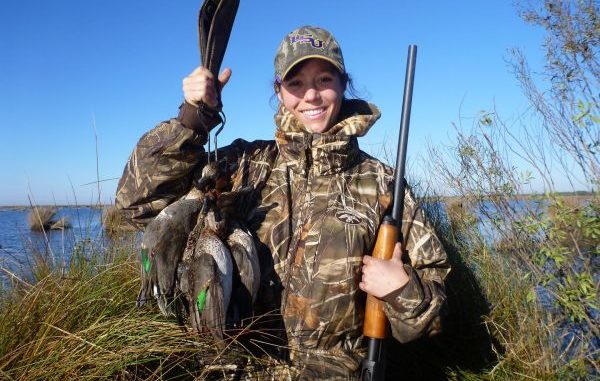
Hunters hope for cold fronts to push new ducks into hunting grounds.
After a roller coaster ride of weather throughout the first split of the 2012-13 waterfowl season, it was only fitting that the Coastal and East zones would close on a balmy weekend to kick off December.
With duck hunting largely weather dependent, hunting success came and went with the passing fronts for most hunters. Cold fronts brought in new birds over hunters’ decoys, but then action would often fizzle as the winds turned from northerly to southerly and temperatures rose. Greg Andrus of Catahoula Lake Duck Guide Service (318-623-2158) said the low water levels hampered many Catahoula hunters throughout the first split, but he said there were decent duck numbers for those who had water to hunt.
“The low water made it tough to get to the blinds, but we’re seeing a good many teal, mallards and pintail, along with canvasbacks and scaup,” Andrus said.
Though overall his harvest was slightly down, Andrus said there are some decent food resources for the birds along the lake’s edge. He was hopeful for another round of cold fronts to bring in a new push of birds to kick off the second split on Dec. 15.
Hunter Shaffett with Whispering Oaks Hunting Lodge (225-301-7335) enjoyed some great hunting in the timber near Vidalia.
“We killed a lot of gray ducks and surprisingly more mallards than I was expecting,” Shaffett reported.
Flooded timber is holding plenty of birds right now, with an abundant acorn crop continuing to provide excellent feed for arriving birds along the Mississippi River.
“Our field hunting has also been good, with mainly teal, pintail and wigeon along with a lot of specklebellies,” Shaffett added.
Though the first split treated the outfit well, Shaffett said his outlook for the rest of the season is heavily dependent upon future cold fronts.
Erik Rue of Calcasieu Charter Service (337-598-4700) was off to a good start in the rice fields near Bell City and Hayes.
“The hunting’s been pretty good throughout the first split, though slower on the calm … days,” Rue said.
Rue also reported encouraging goose numbers in the area, which seems to indicate the birds are sticking around.
“Overall, I’m fairly pleased, as our speck numbers are up drastically from last year and we’re doing pretty well with the ducks,” he said.
Like other rice-field hunters, Rue indicated that water continues to be a hot commodity, and he hopes that some rain will help their cause before too long.
David Faul of Bin There Hunting near Welsh (337-438-4868) also reported decent results, with success largely hinging upon weather to put the birds on the move.
“It started off great for us but slowed down with the warmup, (and) then picked up strong again with a cold front but got slower to close it out this weekend,” Faul noted.
The bane of rice field hunters — fog and lack of wind — was the primary culprit for the slower days. Unlike Rue, however, Faul said the geese in his area are still few and far between, with much of the migration still holding to the north.
Over in the southeastern corner of the state, most hunters are having success based on when the last cold front passed through. A hunt within a couple of days of the last front held promise, while many struggled during the warmups that brought elevated water levels and minimal wind, and even fog on some balmy mornings. With food scarce, higher water levels prevented the birds from rooting around on the bottom of ponds for secondary food sources, so often birds moved elsewhere.
Nonetheless, those who managed to pick their days were often rewarded with straps of grays, green wing teal, pintail, wigeon and redheads. The scaup have also invaded the areas surrounding Lakes Pontchartrain and Borgne, making for a welcomed addition to the bag when the dabbler hunting is slow.
Similarly, the hunting success down river in the Venice area came and went with the passing cool fronts throughout the first split. Hunters found birds to be holding in only select locations and would commonly abandon the area in search of better food sources, as is common on a storm season. Reports out of Venice were consistently “spotty,” with the majority of hunters seeing far fewer ducks than they’re accustomed to this time of year. Hunters heading out for the second split should plan their trips around passing fronts for putting together a hefty strap.
Reports out of the central Louisiana coast, however, have been encouraging, with arriving birds finding much-improved habitat versus the Isaac-ravaged marshes farther east. The marshes of St. Mary, Lafourche and Terrebonne parishes have been doing generally well, with plenty of ringnecks, scaup, pintail along with some canvasbacks, wigeon and mallards. Those hunters willing to put in the time and effort to pinpoint prime feeding locations have been going home with impressive straps including a wide variety of species.
Read other reports — and post your own — in the Waterfowl Hunting Forum. Not a site member yet? It’s free, so click here to get started today!


